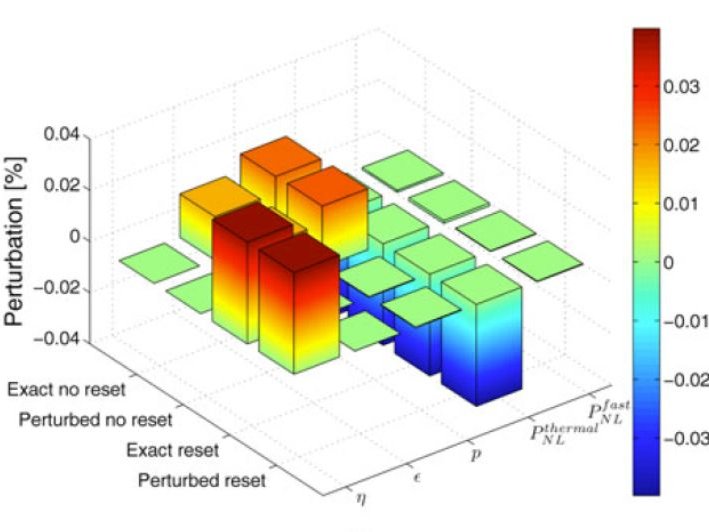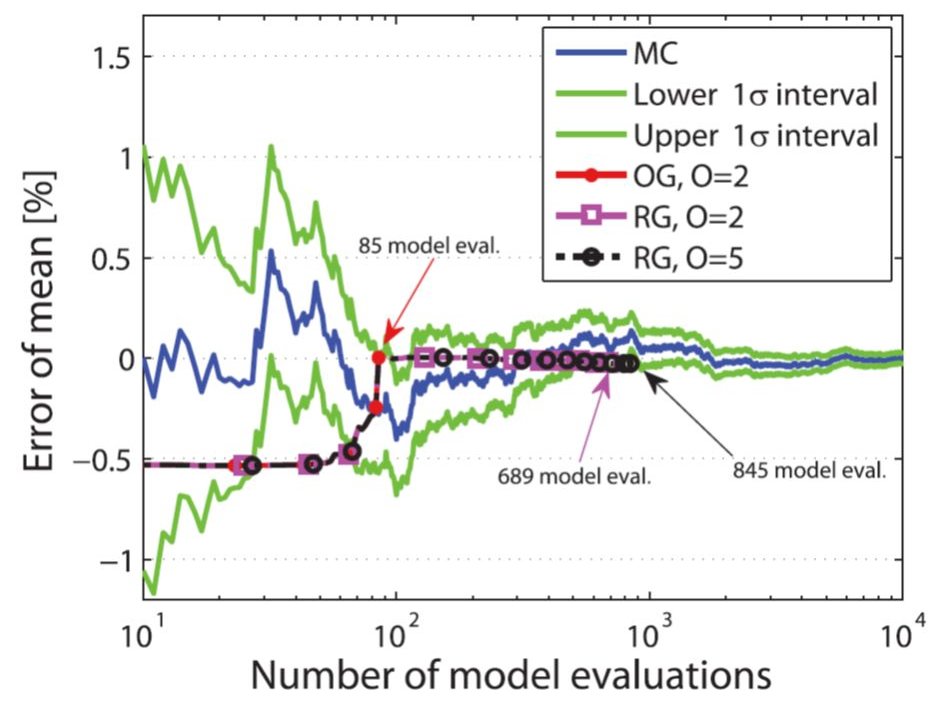Reactor physics research
Since experiments with nuclear reactors are often prohibitively expensive or practically impossible, computational approaches have long been favored at all stages of their design, safety analysis and operation. At the same time, due to the complex nature of nuclear, thermal and chemical processes present in reactors, the basic data for these calculations suffers from significant uncertainties. Proper handling of these uncertainties and their potential effects is clearly paramount, especially for safety calculations (regarding reactor transients or nuclear waste storage) and the development of new generation reactors (e.g. Generation IV. systems or sub-critical assemblies). Therefore a key objective of my research is to develop, implement and apply numerical methods that enable the sensitivity and uncertainty analysis of high-fidelity, multi-physics simulations for nuclear energy systems (and in general for large scale problems).
Ongoing projects are:
OpenGPC: A general Polynomial Chaos (PC) tool for comprehensive uncertainty quantification and robustness analysis of general large-scale problems: The traditional approaches for quantifying uncertainties are based on some form of random sampling and repeated execution of computer codes. The results therefore typically converge slowly and provide only limited information about the effects of uncertainties. In contrast, PC methods allow constructing a meta-model at limited cost, that provides a comprehensive description of uncertainties (moments, PDF, sensitivities, variance decomposition, etc.). This can be useful in situations where fast and quantitative results are needed, or where comprehensive description of model uncertainty is necessary, such as the case for the safety analysis on nuclear installations.

Coupled stochastic/adjoint/adaptive Polynomial Chaos techniques for large scale multi-physics problems: Non-intrusive adaptive Polynomial Chaos methods are ideally suited for the sensitivity and uncertainty analysis of generic multi-physics problems (e.g. reactor transient/accident simulations). They can demonstrably deal with problems with as many as 50 parameters. For several nuclear applications this is already sufficient, however it is desirable to research methods that can deal with larger scale problems, with hundreds, or even thousands of parameters. Burnup calculations needed to accurately estimate the composition of spent nuclear fuel, and transient/accident modelling with a truly large number of uncertain parameters both fall into this category. The coupling of adjoint and stochastic methods with adaptive PC techniques forms a solid basis for research into the S&U analysis of such problems. Stochastic and adjoint techniques are able to handle all input parameters simultaneously, whereas adaptive PC methods provide fast convergence, therefore an ideal combination of these can result in high accuracy with affordable computational costs.


Efficient BWR Loading Pattern Optimization Strategies: In-core fuel management tools optimize the loading pattern designs of reactors. Most often the optimization is carried out by means of simulated annealing algorithms and involves the evaluation of millions of possible loading patterns. For core loading, BWRs are significantly different from PWRs. In contrast to PWRs, BWR loading pattern optimization is considerably more complex and is tightly connected to control rod pattern optimization. At the moment codes use a straightforward approach for optimizing both loading pattern and control rod pattern simultaneously. However, developing more efficient strategies is of great interest to improve the accuracy and performance of the currently less than ideal core optimization for BWRs. The research is carried out in close collaboration with the NRG ROSA team.
References:J. A. Favorite, Z. Perkó, B. C. Kiedrowski, C. M. Perfetti, "Adjoint-Based Sensitivity and Uncertainty Analysis for Density and Composition: A User’s Guide", Nuclear Science and Engineering, 185 (3), pp. 384-405, (2017)
Z. Perkó, D. Lathouwers, J. L. Kloosterman, T. van der Hagen, “Ambiguities in the Sensitivity and Uncertainty Analysis of Reactor Physics Problems Involving Constrained Quantities”, Nuclear Science and Engineering, 180 (3), pp. 345-377, (2015)
Z. Perkó, D. Lathouwers, J. L. Kloosterman, T. van der Hagen, “Large Scale Applicability of a Fully Adaptive Non-Intrusive Spectral Projection Technique: Sensitivity and Uncertainty Analysis of a Gas Cooled Fast Reactor Transient”, Annals of Nuclear Energy, 71, pp. 272-292, (2014)
Z. Perkó, L. Gilli, D. Lathouwers, J. L. Kloosterman, “Grid and basis adaptive polynomial chaos techniques for sensitivity and uncertainty analysis”, Journal of Computational Physics, 260, pp. 54-84, (2014)
Z. Perkó, D. Lathouwers, J. L. Kloosterman, T. van der Hagen, “Adjoint-based sensitivity analysis of coupled criticality problems”, Nuclear Science and Engineering, 173 (2), pp. 118-138, (2013)